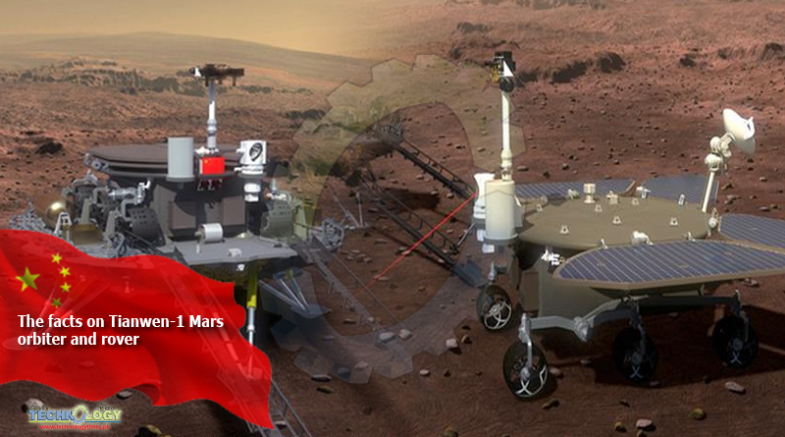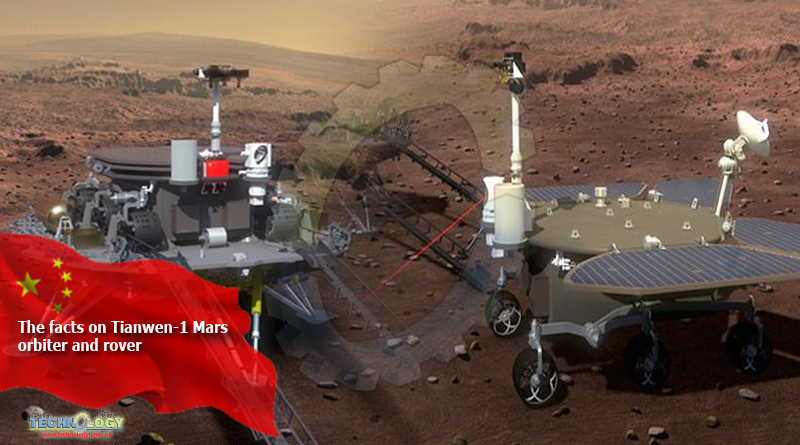With Tianwen-1, China will attempt to send both an orbiter and rover to explore Mars. Here’s an overview of the facts.

China’s 2020 mission to Mars, Tianwen-1, aims to send a probe to orbit the planet and also land a rover on its surface. As with other Mars missions run by NASA and the United Arab Emirates this year, China’s mission is scheduled to launch between July and August 2020, and begin operation at Mars by February 2021.
What’s in a name?
The name comes from a long poem called “Tianwen.” It means “questions to heaven,” and was written by Qu Yuan, a Chinese poet and politician, who lived in about 340-278 BC. He is considered one of the greatest poets of ancient China.
Watch video01:38
Ethiopia’s first satellite in space launched
China’s news agency, Xinhua, writes that Qu Yuan raised a series of questions in the poem “Tianwen,” involving the sky, stars, natural phenomena, myths and the real world, showing his doubts about some traditional concepts and the spirit of seeking the truth.
A first for China
Tianwen-1 will be China’s first mission to Mars. It will be an attempt to observe the planet from orbit and the ground in one go. It follows China’s successful landing on the “dark side” of Earth’s moon little over a year ago (January 2019).
China’s future on Mars could look like this — a mock-up “Base 1 Station” in the Gobi Desert
The mission has been described as ambitious, not least for its including an orbiter and a Mars rover, but also because it’s taken China a mere six years from the initial planning and mission design to launch in July 2020.
Tianwen-1’s launch window
The current scheduled date of departure is July 23, but the launch could run through to mid-August 2020, depending on launch conditions, which can be affected by bad weather.
Where’s the launch site?
Wenchang Spacecraft Launch Site, Hainan, China.
What’s it riding on?
The “launch vehicle” is one of China’s own heavy-lift rockets in the Long March 5 series.
When will it arrive?
Current projections would have the orbiter and lander above and on Mars by February 2021.
Where will it land?
In late 2019, China was focusing on two preliminary landing sites near Utopia Planitia, Mars.
Why launch now?
Every 18 to 24 months, Earth and Mars align in such a way that the journey — or trajectory — is effectively shorten from a nine-month trip to a seven-month trip. Failing to launch during this “launch window” would mean the mission would have to wait another two years.
There is a lot of competition out there, with the UAE, USA and others such as India and Israel eager to demonstrate their capabilities for space exploration.
But for China, it’s also about marking the country’s 50th anniversary as a spacefaring nation.
A Long March 5 rocket launches from China’s Wenchang Space Launch Center in May 2020
Zhang Kejian, who heads China’s National Space Administration (CNSA), has told Xinhua reporters that over the past 50 years, Chinese space engineers and scientists had overcome various difficulties and achieved aerospace development through self-reliance and independent innovation.
The mission
As with many Mars missions, Tianwen-1 is about learning more about the Red Planet and, through that, for scientists to learn more about our own planet.
About 4 billion years ago, the Martian atmosphere changed, and liquid water evaporated. But scientists don’t know why. There may be deposits of water underground, known as subsurface water.
The Emirates Mars Mission (known as “Hope” or EMM) also aims to learn more about the Martian atmosphere, in particular how and why oxygen and hydrogen are escaping the planet.
Beyond that, China wants to use the Tianwen-1 mission as a step towards a mission in 2030 that would bring back samples from Mars to Earth.
Instruments on the probe and rover
Tianwen-1’s orbiter, or probe, will carry 13 “payloads.” A payload can be a communications or Earth observation satellite, but in this case the payload is the mission’s instruments.
For instance, there’s a remote sensing camera and a ground penetrating radar.
Once the lander and rover detach from the probe and land on the surface of Mars, additional instruments will include a subsurface penetrating radar (SPR).
As the name suggests, the SPR’s main scientific objective is to investigate the Martian soil below the surface of the planet to determine its thickness and make-up.
Tianwen-1 includes a probe that will orbit Mars and a lander that will search for subsurface water on the planet
The rover weighs around 200 kilograms (about 440 pounds). It will be powered by solar panels, which may be impeded by a potential landing in the planet’s northern hemisphere — landing at the equator would be better for solar power.
It will investigate the ground with radar, perform chemical analyses on the soil, and look for biomolecules and biosignatures.
Other instruments include a Martian surface magnetic field detector, and a climate detector.
International collaboration
China has been keen to highlight its collaboration with international partners on the Tianwen-1 mission.
It started with a collaboration with Russia, and grew to build technical partnerships with, for instance, the Austrian Space Research Institute (IWF). The IWF has contributed to the orbiter’s magnetometer and helped with the calibration of the flight instrument.
A woman wearing a spacesuit walking out of “Mars Base 1”, a C-Space Project, in the Gobi Desert
Meanwhile, space officials from the UN Office for Outer Space Affairs, the International Astronautical Federation, the European Space Agency, the Asia-Pacific Space Cooperation Organization, Brazil, France, Pakistan and Russia have sent congratulatory videos or letters to China ahead of the launch and expressed a desire to strengthen aerospace cooperation.
Chances of success
Well, China launched its first satellite Dongfanghong-1 into space on April 24, 1970. This year is the 50th anniversary of the start of China’s entry into space.
So, China is long in the space game.
Chinese space station tumbles to earth
In 2003, China became the third country to put a man in space with its own rocket after the former Soviet Union and the United States.
And it landed Change-4 on the moon in January 2019 — a move that no other nation has managed since NASA’s Apollo missions in the late 1960s and early 70s.
And speculation about the Long March 5 rocket, following a failure to achieve orbit on a test in 2017, seem to have been allayed with a successful launch in December 2019. But landing on Mars will be a whole new challenge in itself. More experienced spacefaring nations have failed, including the Europeans and Russians with ExoMars 2016, and Japan has failed on Mars as well.
Originally Publish at: https://www.dw.com/
